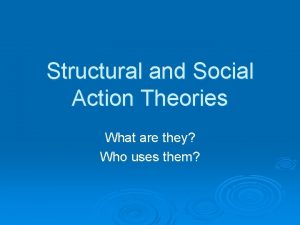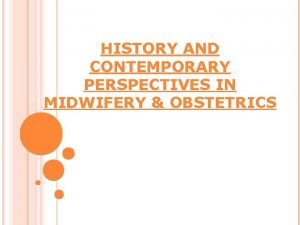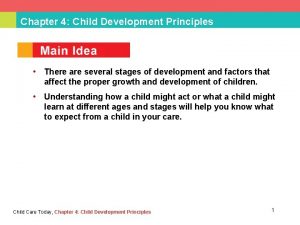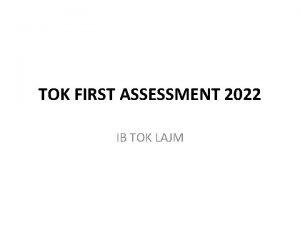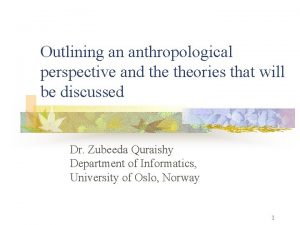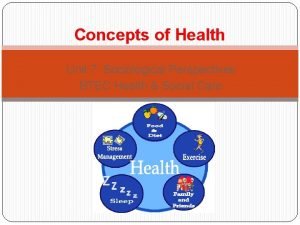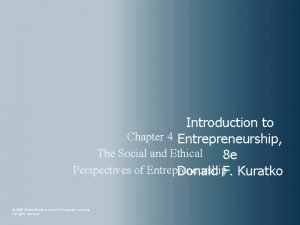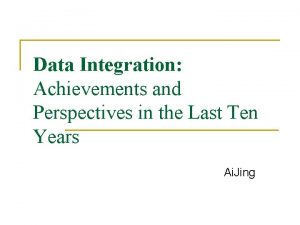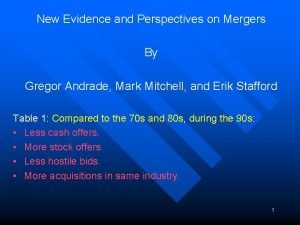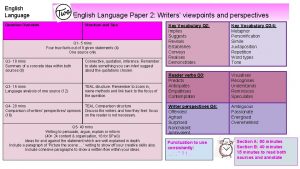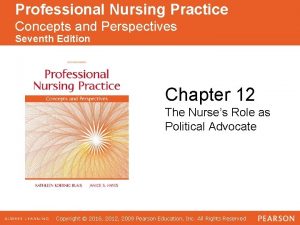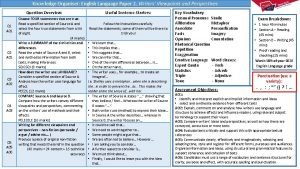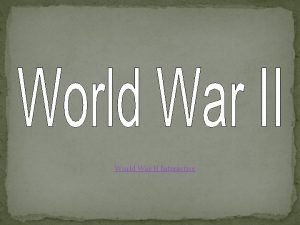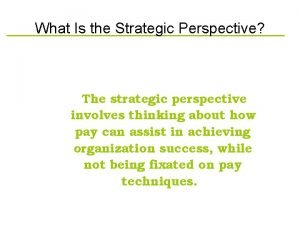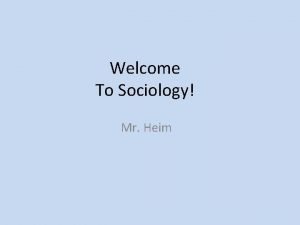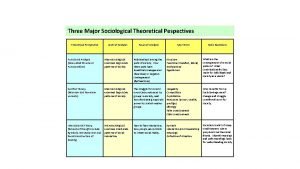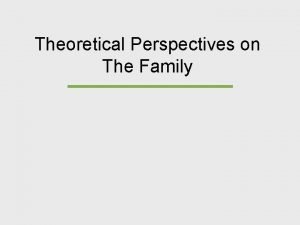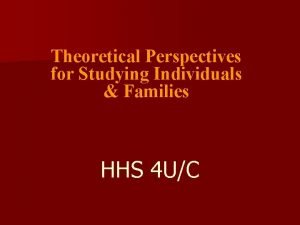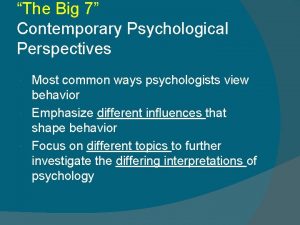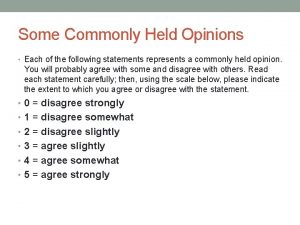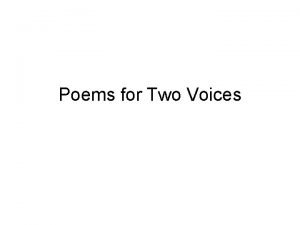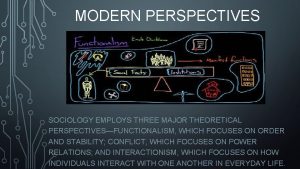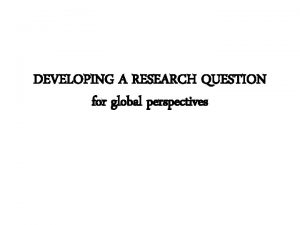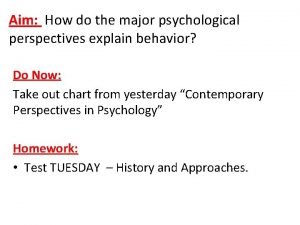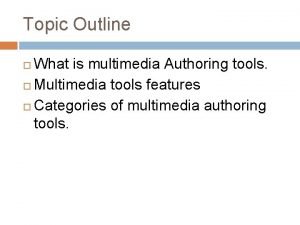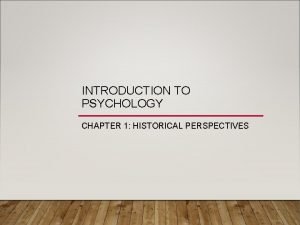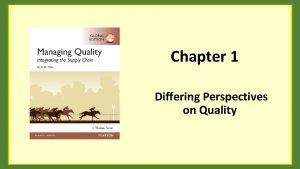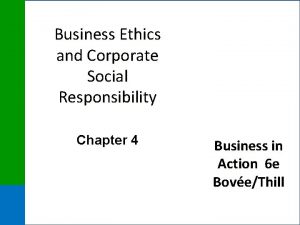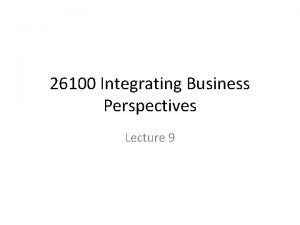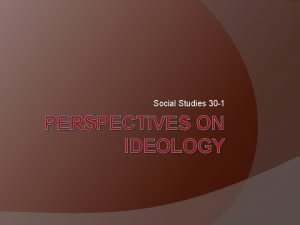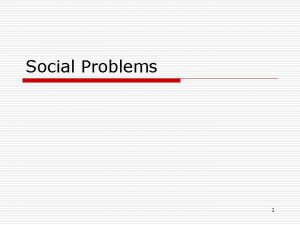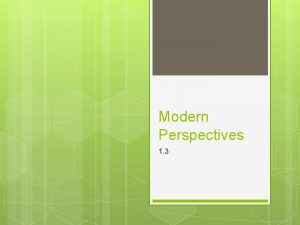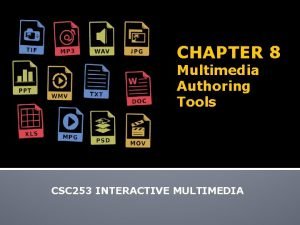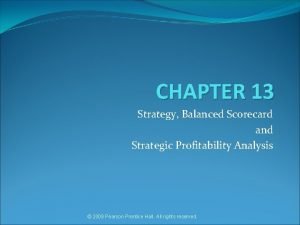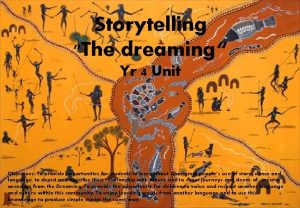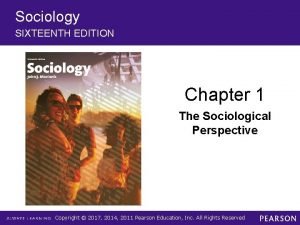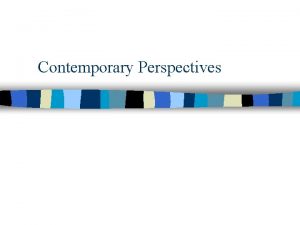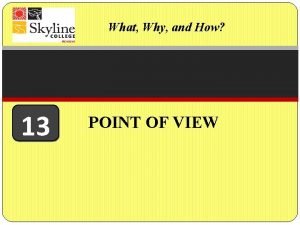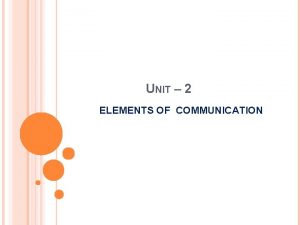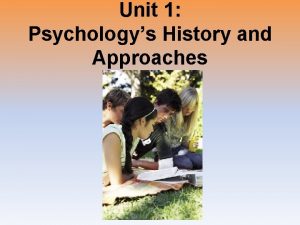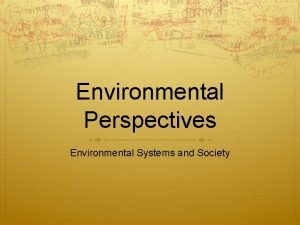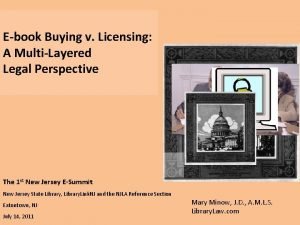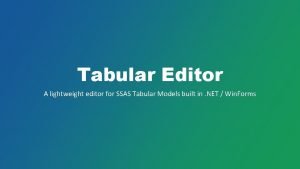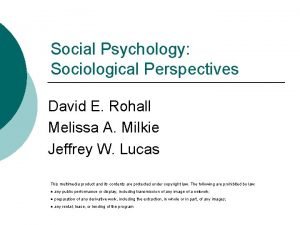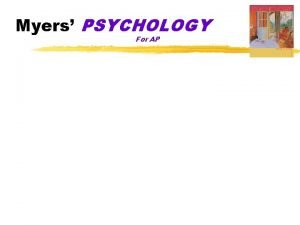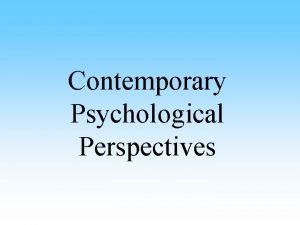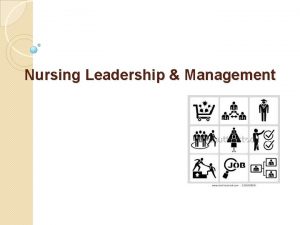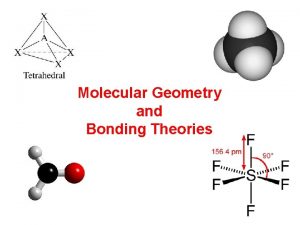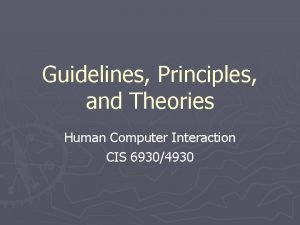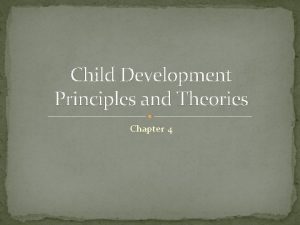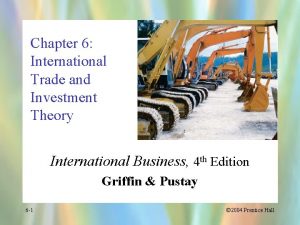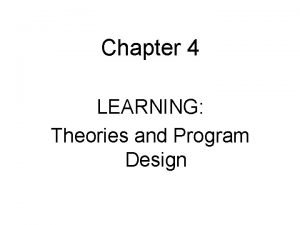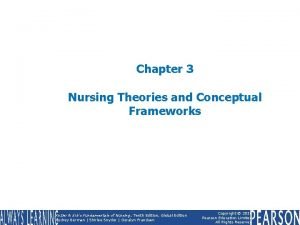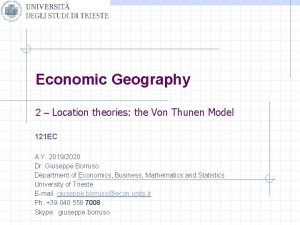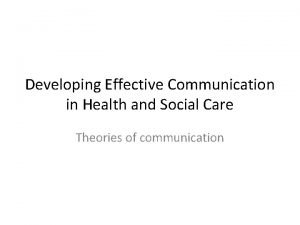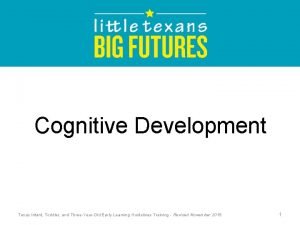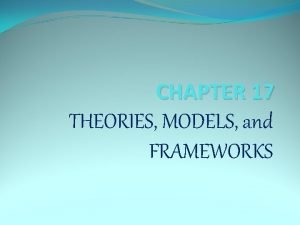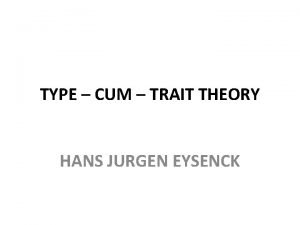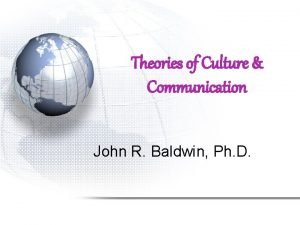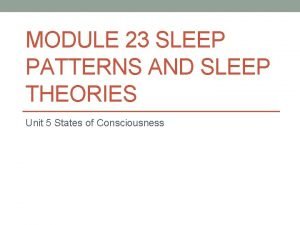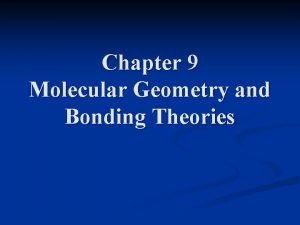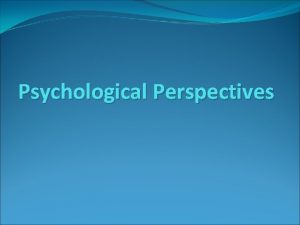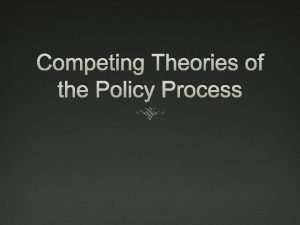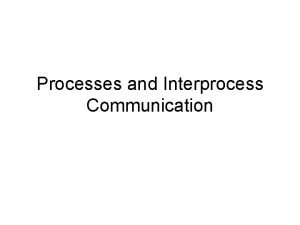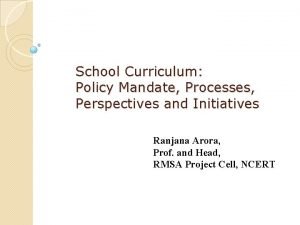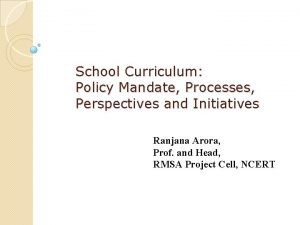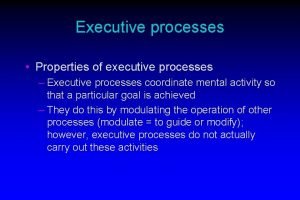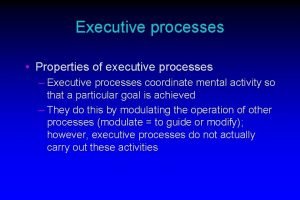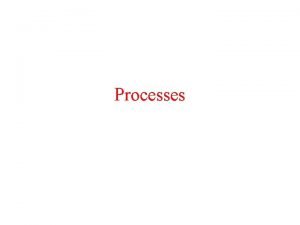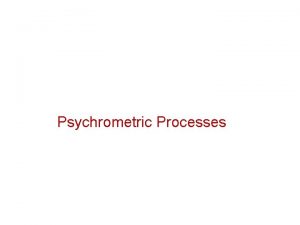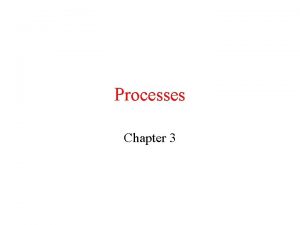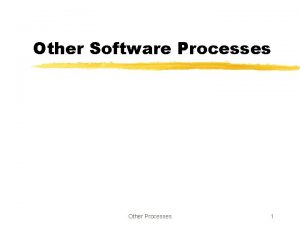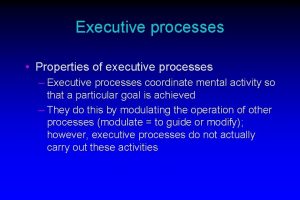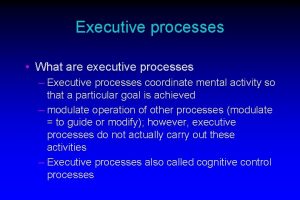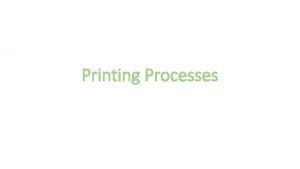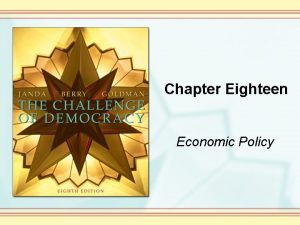Perspectives and Processes in Policy Studies Theories of
























































































- Slides: 88


Perspectives and Processes in Policy Studies

Theories of the Policy-making Process z The first generation of policy-making process theories y. Scientific-rational model y. Incrementalist model y. Garbage can model (Cohen, March & Olsen, 1972) z The second generation of policy-making process theories y. Comprehensive rational model y. The stages heuristic model y. New Institutionalism model y. The multiple stream model y. The discourse model

Comprehensive Rationalist Perspective in Policy Making Theory z Comprehensive rational framework: The ideal-typical framework y Problem analysis x. Pathology control approach x. Desirability striving approach y Comprehensive information gathering y Solution analysis x. Best solution approach x. Satisfice and good enough resolution approach

Comprehensive Rationalist Perspective in Policy Making Theory z Harold Lasswells’ intelligence system for policy making y Intelligence: The stage of intelligence collection, which consists of x Information of the status quo of the phenomenon to be intervene x Information of causal relations among vital constituents in operation within the policy phenomenon x Information of the feasibility of candidate solutions x Cost-benefit analysis of candidate solutions

PROBLEM ANALYSIS SOLUTION ANALYSIS 1. Understanding the problem 4. Choosing evaluation criteria (a) Receiving the problem: assessing the symptoms. (b) Framing the problem: analyzing market and government failures. (c) Modeling the problem: identifying policy variables. 2. Choosing and explaining relevant goals and constraints. 5. Specifying policy alternatives 6. Evaluating: predicting impacts of alternatives and valuing them in terms of criteria (Weimer & Vining, 1992) COMMUNICATION Conveying useful Advice to clients 7. Recommending actions. 3. Choosing a solution method. INFORMATION GATHERING Identifying and organizing relevant data, theories and facts; using facts as evidence about future consequences of current and alternative policies. Figure 8. 1: A summary of Steps in the Rationalist Mode

Comprehensive Rationalist Perspective in Policy Making Theory z Harold Lasswells’ intelligence system for policy making y Promotion: The stage of considering the pros and cons of candidate solutions y Prescription: The stage of making decision on the prescription of the course of action to be taken y Invocation: The stage of laying down the rules and regulations based upon which the policy prescriptions can be invoked y Application: The stage of carrying out the course of action stipulated in the policy by the designated authority. y Termination: The stage of bringing the course of action to a close as designed y Appraisal: The stage of evaluating the effectiveness or/even efficiency of the policy measures.

Political Perspective in Policy Making Theory z Criticism on comprehensive rational framework by incrementalism and the introduction of political rationality into the policy process study z Conceptual difference between political rationality and means-end rationality y Means-end rationality refers to agency that a person acts in a conscious and knowledgeable “way in which the attainment of his goal can be maximized in the real world. ” (Dahl & Lindblom, 1992, p. 57) y Political rationality refers to the agency that the person will make conscious and knowledgeable consideration of the political reality and its entailed constraints and opportunities, within which the maximization of the means -to-an-end / satisfice project is carried out.

Political Perspective in Policy Making Theory y. Pluralism: The simple institutional model x. The general political system model: Pluralism as a theory of policy making or politics in general is generated from the political system model. In political system model, political process is characterized as input-process-outputfeedback model. x. Pluralistic model characterizes the policy making with the following attributes • Plurality of interest groups each with equal capacities in inputting political demands into the polity • The polity processes the plurality of political demands in impartial and indiscriminant manner • Plurality of administrative output to meet with plurality of political demands

Political Perspective in Policy Making Theory y Advocacy coalition model This model further specifies that the networking among policy actors in policy making process by put forth the concept of advocacy coalition. It indicates that policy actors will form coalition in order to advocate a particular policy choice. These coalitions will subsequently constitute a stabilizing parameter or institutional inertia within a policy area.

Political Perspective in Policy Making Theory z The state theory State theorists criticize pluralism and political system of treating the state as a blackbox or an impartial arbitrator of political demands. In replacement, they put forth different thesis on the natures and features of the modern state y y The instrumental-state perspective The corporatist-state perspective The derivative-state perspective Competition-state perspective

Simon and March’s Contribution to the New–institutionalism z The contribution of Herbert Simon: Herbert A. Simon, the Nobel laureate in Economics 1978, in his now-classic Administrative Behavior (1997/1945) has made to important distinctions, y. Distinction between economic man and administrative man: Simon underlined that " The model of economic man was far more completely and formally developed than the model of the satisficing administrator. …limited rationality was defined largely as a residual category—as a departure from rationality. " (P. 118)

Simon and March’s Contribution to the New–institutionalism Nobel laureate In Economics 1978 (1916 -2001)

Simon and March’s Contribution to the New–institutionalism z The contribution of Herbert Simon: … y. Distinction between the maximization principle (best solution) and satisfice principle (good-enough solution): "Whereas economic man supposedly maximizes—selects the best alternative from among all those available to him—his cousin, the administrator, satisfices—looks for course of action that is satisfactory or "good enough". (P. 119)

Simon and March’s Contribution to the New–institutionalism z James March’s conception of logic of appropriateness: James G. March, who once coauthored with Simon in another now-classic, Organizations (1958/1993) and has since then become one of the representative figures in new -institutionalism, underlines that

Simon and March’s Contribution to the New–institutionalism z James March’s logic of appropriateness… y Policy making process is not simply a rational calculation of means-end and/or cost-benefit analyses but should be conceived predominantly as institutional processes; hence they are by definition influenced if not determined by the features, structures and cultures of the institutions, in which the policy making processes are supposed to undergo.

Simon and March’s Contribution to the New–institutionalism y Accordingly, he makes the distinction between the logics of consequence and that of appropriateness. x Logic of consequence: “The idea is that a reasoning decision maker will consider alternatives in terms of their consequences for preferences. ” In other words, it assumes that “decision processes …are consequential and preference-based. They are consequential in the sense that action depends on anticipation of the future effects of current actions. Alternatives are interpreted in terms of their expected consequences. They are preference-based in the sense that consequences are evaluated in terms of personal preferences. Alternatives are compared in terms of the extent to which their expected consequences are thought to serve the preferences of the decision make. (March, 1994, P. 2)

Simon and March’s Contribution to the New–institutionalism z James March’s logic of appropriateness… x Logic of appropriateness: “When individuals and organizations fulfill identifies, they follow rules or procedures that they see as appropriate to the situation in which they find themselves. Neither preferences as they are normally conceived nor expectations of future consequences enter directly into the calculus. ” (March, 1994, p. 57)

Simon and March’s Contribution to the New–institutionalism z James March’s logic of appropriateness… y. Accordingly, decision makers are no longer based on the choices solely on consequences of actions and the extent that their preferences are satisfied by the consequences of actions. Instead they would base their choices on the follows: (p. 58) “ 1. The question of recognition: What kind of situation is this? 2. The question of identity: What kind of person am I? Or what kind of organization is this? 3. The question of rules: What does a person such as I, or an organization such as this, do in a situation as this? ” (March, 1994, P. 58)

Simon and March’s Contribution to the New–institutionalism z Taking together, Simon and March’s conceptions on decision making process, policy making processes are no longer conceived as simple rational, consequential and preference-based calculations taking places in some socio-cultural vacuum. Policy-making processes must be studied against the institutional contexts and situations in which they are embedded. Decision makers, who recognized in these institutional contexts, are embodied with particular identities. And deriving from these institutional contexts and identities are rules that these decision makers would find themselves obliged to follow.

Elinor Ostrom’s Institutional Analysis & Development in Rational-Choice Institutionalism z Elinor Ostrom, one of the co-winners of the 2009 Nobel Prize in economic science, has developed the IAD framework to analyze how an aggregate of rational decision makers come to reciprocal decision of mutual benefits. (Ostrom, 1990; 1999; 2005)

Elinor Ostrom (1933 -2012)

Elinor Ostrom’s Institutional Analysis & Development in Rational-Choice Institutionalism z Elinor Ostrom, one of the co-winners of the 2009 Nobel Prize in economic science, has developed the IAD framework to analyze how an aggregate of rational decision makers come to reciprocal decision of mutual benefits. (Ostrom, 1990; 1999; 2005) The framework is made up of three tiers of conceptual units, namely (1) the action arena, (2) the exogenous variables, and (3) the interaction patterns and their outcomes. This framework can be represented as follows.

Elinor Ostrom’s Institutional Analysis & Development in Rational-Choice Institutionalism (Source: Ostrom, 2005, P. 13)

Elinor Ostrom’s Institutional Analysis & Development in Rational-Choice Institutionalism z The action arena: The core conceptual unit of the IAD framework is what Ostrom called the action arena. The action arena of made up of two units, namely the actors and action situation

Elinor Ostrom’s Institutional Analysis & Development in Rational-Choice Institutionalism y. Action situation: “The structure of an action situation includes x the set of participants, x the specific positions to be filled by participants Roles expectation x the set of allowable actions and their linkage Roles to outcomes, x the potential outcomes that are linked to individual sequence Roles performance of actions, Social Control x the level of control each participant has over choice, x the information available to participants about the structure of the action situation, and x the cost and benefits―which serve as incentive and deterrents―assigned to actions and outcomes. ” (Ostrom, 1999, P. 43)

Elinor Ostrom’s Institutional Analysis & Development in Rational-Choice Institutionalism y Action situation: … In addition, an action situation can further be characterized as recursive or non-recursive. This conceptual unit can be represented as follows. (Source: P. 33)

Recursive Situation Nonrecursive Situation

Elinor Ostrom’s Institutional Analysis & Development in Rational-Choice Institutionalism y The actors: Actors in the action arena can either be “a single individuals or a group functioning as a corporate actor. ” (Ostrom, 1999, P. 44) This actors are assumed to possess xmeanings and values imputed to the situations; xresources, information, and beliefs; xinformation-processing capacities; and xdecision-making strategies brought to the situation. With these possessions, Ostrom suggested that actors can further be characterized into for examples as “Homo economicus”, “Fallible learner”, “opportunist”, etc

Elinor Ostrom’s Institutional Analysis & Development in Rational-Choice Institutionalism z The exogenous Variables: The second tier of conceptual unit consists of three exogenous variables, each of which will asset its effect on the dependent variable, i. e. action arena. These exogenous variables include y. The rules in use: x The concept of rules: Ostrom defines rules as “shared understanding among those involved that refer to enforced prescriptions about what actions are required, prohibited, or permitted. All rules are the results of implicit or explicit efforts to achieve order and predictability among humans by creating classes of persons (positions) that are then required, permitted, or forbidden to take classes of persons in relation to required, permitted, or forbidden states of the world. ” (Ostrom, 1999, P. 49, original emphases)

Elinor Ostrom’s Institutional Analysis & Development in Rational-Choice Institutionalism z The exogenous Variables: … y. The rules in use: … x Rule configurations: Ostrom differentiates seven types of working rules each of which affect one aspect of the structure of the respective action arena. These rules are represented as follows. (Source: Ostrom, 2005, P. 189) x Accordingly, these seven types of rule will configure into a set of “rules-in-use” in a particular action arena and subsequently in an institution.


Elinor Ostrom’s Institutional Analysis & Development in Rational-Choice Institutionalism y States of the world: It refers to the biophysical/material condition, in which the action arena is embedded. Ostrom has specified the attributes of the states of the world with two dimensions, namely excludability and subtractability. x Excludability refers to the extent that whether the goods and/or services available in a given state of the world are difficult and costly to exclude those who are not entitled to consume the respective goods and/or services. x Subtractability refers to the extent that whether numbers of consumers consuming the goods and/or service in a given state of the world will subtract the quantity and quality of the respective goods and/or services.

Elinor Ostrom’s Institutional Analysis & Development in Rational-Choice Institutionalism y States of the world: …. . Accordingly, goods and services available in a given state of the world can be categorized as follows. (Source: Ostrom, 2005, P. 25)

Elinor Ostrom’s Institutional Analysis & Development in Rational-Choice Institutionalism y Attributes of community: The third set of exogenous variables affecting the structure of the action arena is the community and its attributes. It is the least development conceptual unit in the IAD model. This underdevelopment of the conceptual unity of community is understandable given the academic background of Ostrom, who is a political scientist focusing on rational-choice institutionalism. She has specifically assigned the task of developing the conceptual unit of community to sociologists, who “tend to be more interested in how shared value system affect the ways human organize their relationships with one another. ” (Ostrom, 1999, P. 50)

Elinor Ostrom’s Institutional Analysis & Development in Rational-Choice Institutionalism y Attributes of community: … Ostrom has simply outlined five attributes of community, namely (Ostrom, 2005, P. 26 -27) x “values (and norms) of behavior generally accepted in the community; x the level of common understanding that potential participants share (or do not share) about the structure of particular types of action arenas; x the extent of homogeneity in the preferences of those living in a community; x the size and composition of the relevant community; and x the extent of inequality of basic assets among those affected. ”

Elinor Ostrom’s Institutional Analysis & Development in Rational-Choice Institutionalism z The interaction patterns and outcomes: Ostrom, as an institution analyst, underlines that the accuracy of institutional analysts’ inference of interaction patterns (i. e. institutions) and outcomes generated in a given action arena depends on the empirical attributes of the exogenous variables, the actors and the action situations in the IAD models at point.


Elinor Ostrom’s Institutional Analysis & Development in Rational-Choice Institutionalism y Market Institution: Perfect competitive market

Elinor Ostrom’s Institutional Analysis & Development in Rational-Choice Institutionalism y Tragedies of the Common

Elinor Ostrom’s Institutional Analysis & Development in Rational-Choice Institutionalism y Application of tragedy of the common on the impact of Direct-Subsidized Scheme (DSS) on the commonpool of schools and schoolplaces in the publicschool sector of Hong Kong.

Elinor Ostrom’s Institutional Analysis & Development in Rational-Choice Institutionalism z Prisoner’s dilemma: Ostrom conceives prisoner’s dilemma model in game theory as a particular case of common-pool resource (CPR) situation. Instead of numerous participants, in prisoner dilemma model there are only two participants. However, under the assumption of rational calculation of maxcimizattion of bebefit, the situation would only encourage defect and discourage cooperation. Hence, the results of the prinsoners’ rational choices are the same as CPR situation, i. e. tragedy of the common.



Elinor Ostrom’s Institutional Analysis & Development in Rational-Choice Institutionalism y Evaluating outcomes: The final conceptual unit of the IAD framework is the evaluating the outcomes being achieved. Ostrom proposes that the outcomes can be evaluated under six criteria. These evaluative criteria are: x Economic efficiency: “Economic efficiency is determined by the magnitude of the change in the flow of net benefits associated with an allocation or reallocation of resources. ” (Ostrom, 1999, P. 48)

Elinor Ostrom’s Institutional Analysis & Development in Rational-Choice Institutionalism y Evaluating outcomes: … x Fiscal equivalence: “There are two principal means of assessing equity: (1) on the basis of the equality between individuals’ contributions to an effort and benefits they derive and (2) on the differential abilities to pay. The concept of equity that underlies an exchange economy holds that those who benefit from a service should bear the burden of financing that service. ” (Ostrom, 1999, P. 48) x Redistributional equity: “Policy that redistribute resources to poorer individuals are of considerable important. …The provision of facilities that benefit particularly needy groups …may conflict with the goal of achieving fiscal equivalence. ” Ostrom, 1999, P. 48)

Elinor Ostrom’s Institutional Analysis & Development in Rational-Choice Institutionalism y Evaluating outcomes: … x Accountability: “In democratic polity, officials should be accountable to citizens concerning the development and use of public facilities and natural resources. Concern for accountability need not conflict greatly with efficiency and equity goals. ” (Ostrom, 1999, P. 48)

Elinor Ostrom’s Institutional Analysis & Development in Rational-Choice Institutionalism y Evaluating outcomes: … x Conformance to general morality: This criterion refers to evaluate the level of general morality fostered by a particular set of institutional arrangements. ” And Ostrom has suggested two of such general morality. One is honesty, which concerns with issues such as “are those who are able to cheat and go undetected able to obtain very high payoffs? Are those who keep promises more likely to be rewarded and advanced in their careers? ” Another general morality is sustainability of reciprocal interaction, i. e. “How do those who repeatedly interact within a set of institutional arrangements learn to relate to one another over the long term? ” (Ostrom, 1999, P. 49)

Elinor Ostrom’s Institutional Analysis & Development in Rational-Choice Institutionalism y Evaluating outcomes: … x Adaptability: Lastly, Ostrom underlines that “unless institutional arrangements are able to respond to everchanging environments, the sustainability of resources and investment is likely to suffer. ” (Ostrom, 1999, P. 49) Taken as a whole, Ostrom reminds us “trade-off are often necessary in using performance criteria as a basis for selecting from alternative institutional arrangements. It is particularly difficult to choose between the goals of efficiency and redistributional equity. ” (Ostrom, 1999, P. 49)


Policy-Making Theory III: Multiple Stream Approach z The approach grows out of the Garbage Can Model, which is another alternate policy-process model to the scientificrational model in the 1970 s. The primary assumption of the model is the emphasis on the ambiguity nature of the policy phenomena. z By ambiguity, it refers to “a state of having many way of thinking about the same circumstances or phenomena. ” (Feldman, 1989, quoted in Zahariadis, 1999, p. 74) The concept of ambiguity differs from the concept of uncertainty, which is one of the constituent concept in rational model, is that uncertainty can be reduced or even eliminated by information and analysis of it, while ambiguity on policy phenomena cannot be reduced by information but in some case may even enhance it.

Policy-Making Theory III: Multiple Stream Approach z Another essential assumption of the approach is that policy issues or even problems are not attended in an analyticrational way as the scientific-rational model assumes. The garbage-can and multiple-stream models stress that the logic of approaching policy issue is temporal sorting and not rational choice. “Who pays attention to what and when is critical. Time is a unique, scarce resource. Because the primary concern of decision-makers …is to manage time effectively rather than manage tasks. It is reasonable to pursue a lens (approach) that accords significance to time rather than to rationality. ” (Zahariadis, 1999, p. 74)

Policy-Making Theory III: Multiple Stream Approach z John Kingdon’s three streams in policy making y Problem: It refers to the conditions or mechanism on which policy makers identify, define and take action on a policy problem. They include x Indicators x Dramatic events or crisis x Feedback of existing programs y Policy: It refers to the conditions spawned from the policy issues or phenomena themselves. They include x Policy ideas generated from policy communities x The prospect of technical feasibility and value acceptability of the policy itself y Politics: It refers to the conditions grow out of the political environment. They include x National mood x Legislative and executive turnover

Policy-Making Theory III: Multiple Stream Approach z John Kingdon’s three streams in policy making y The conception of the coupling of the streams and the formation of “policy window”. Kingdon signifies that when the three streams are joined together at critical moments in time, they will constitute a “policy window”. As a “policy window” opens, it indicates that the policy issue will elevate into a policy agenda and sequent policy-making steps will materialized.

Policy-making Theory IV: Discourse Perspective In discursive perspective, policy making is construed as language game of persuasion and argumentation. Hence, policy-making studies are analyses of how different parties concerned frame, organize and possibly win the argumentation in a policy discourse. z Formal argument model in policy analysis y. Constituents in formal argument model (William Dunn) x. Claim x. Information x. Warrant x. Backing x. Qualifier x. Rebuttal

I therefore C Policy-relevant Information is the beginning of a policy argument Claim affirms that the policy conclusion is true since W Warrant justifies the movement from I to C C becomes I in a sequent argument The Logical Structure of Policy Argument

therefore I C Mother tongue Instruction (MTI) enhance learning effectiveness MTI for all in compulsory education since W Findings of International Studies in Educational Achievement (IEA) for Science C becomes I in a sequent argument The Logical Structure of Policy Argument

I therefore Q Qualifier indicates that the claim has a given plausibility Policy-relevant Information is the beginning of a policy argument C Claim affirms that the policy conclusion is true as qualified unless since W R Warrant justifies the movement from I to C Rebuttal indicates that special conditions, exceptions, or qualifications to W, or I reduce the plausibility of C because C becomes I in a sequent argument B Backing justifies W The Logical Structure of Policy Argument

I therefore Q On what subjects? At what levels? MTI enhance learning effectiveness C MTI for all in compulsory education unless since W R Findings of IEA for Science Not in English Not at more advanced levels C becomes I in a sequent argument because B Backing justifies W The Logical Structure of Policy Argument

I therefore Q Most of independent States adopt MTI enhance learning effectiveness C MTI for all in compulsory education unless since W R UNESCO 1953 Document Not in most of post-colonial states C becomes I in a sequent argument because B Backing justifies W The Logical Structure of Policy Argument

Policy Argumentation: Interpretive Approach z. Formal argument model in policy analysis y. Constituents in formal argument model (William Dunn) x. Claim x. Information x. Warrant x. Backing x. Qualifier x. Rebuttal y. Types of argumentative claims x. Designative claims on facts x. Evaluative claims on values x. Advocative claims on actions

Policy Argumentation: Interpretive Approach z. Interpretive approach to policy argument y Deep description of arguments of different interpretive communities y Constituents of the architecture of argumentation and the textuality of argumentative/persuasive texts x. Genre x. Frame x. Rhetoric x. Narrative

The Conception of Genre in Critical Discourse Analysis z Concept of genre y “A genre is a group of texts that share specific discursive features. ” (Gill & Whedbee, 1997, p. 163). y Genre means “distinctions within convention …between text types. ” (Fairclough, 1995, p. 13) More specifically, Fairclough defines “genre as socially ratified way of using language in connection with a particular type of social activities, ” (Fairclough, 1997, p. 14) e. g. interview, narrative, exposition, argumentation, persuasion. y Accordingly policy text and/or discourse can mainly be construed as argumentative and/or persuasive genre of text and/or discourse.

The Conception of Genre in Critical Discourse Analysis z Concept of genre y According to Richard Edwards and his associates persuasive text may take the following forms x. Deliberative genre: It refers to policy discourse which is “associate with policy and its future orientated and speculative. ” (Edwards et al. , 2004, p. 19) For example, in documents relating to recent education reform, they commonly refer to the future of global-informational economy and network society and how education reform should prepare students to fit into new species of flexible and workers and/or networkers. x. Forensic genre: It refers to policy discourse which “focuses on past events and attempt to provide an account that is taken to be true. ” (ibid) For example, the rhetoric of presenting data of declining standards in comparative educational research and statistics of falling competitiveness of national economy in global market can be construed as a kind of forensic genre.

The Conception of Genre in Critical Discourse Analysis z Concept of genre y According to Richard Edwards and his associates persuasive text may take the following forms x. Epideictic genre: It refers to policy discourse which focuses on the contemporary. However, in epideictic genre one can usually find “the notion of ‘naming and shaming’, publicly denouncing organizations and individuals who fail to meet the quality standards and inspection criteria to which they are subject. ” (ibid) For example, blaming on teachers, naming negative valueadded schools, and shaming failing schools.

Conception of Frame in Policy Studies z Law and Rein define frame “as a way of representing knowledge, and as the reliance on (and development of) interpretative schemas that bound and order a chaotic situation, facilitate interpretation and provide a guide for doing and acting. ” (Law and Rein, 2003, p. 173)

Conception of Frame in Policy Studies z The concept of frame finds its scholarly resonance in the well-documented concept of “definition of situation” in symbolic interactionism. As Law and Rein quote in length of Goffman’s exposition “I assume that when individuals attend to any current situation, they face the question: ‘What is going on here? ’ Whether asked explicitly, as in times of confusion and doubt, or tacitly, during occasions of usual certitude, the question is put and the answer to it is presumed by the way the individual then proceeds to get on with the affairs at hand. ” (Quoted in Law & Rein, p. 175)

Conception of Frame in Policy Studies z The functions of frames in policy argumentation are to (Law & Rein, p. 174) y “note a special type of story that focuses attention” y “provide stability and structure by narrating a problemcentred discourse as evolves over time, ” y “define the boundary between evidence and noise”, y “wed fact and value into belief about how to act”

Conception of Frame in Policy Studies z. Types of policy frame y Rhetoric frame y Action frame x. Policy action frame: It refers to “the frame an institutional actor uses to construct the problem of a specific policy situation. ” x. Institutional action frame: It indicates the frame held by institutions. This signifies that as agents of thought and action, institutions possess characteristics point of view, prevailing system of beliefs, category scheme, images, routines and styles of argument and action, all of which inform their action frames. ” (Schon & Rein, 1994, p. 33)

Conception of Frame in Policy Studies z. Framing HKSAR education reform y Lifelong learning for employability and competitiveness y Lifelong learning for social inclusion and political empowerment z. Framing Quality Education y Quality for analytic-technical control y Quality for communal understanding of trust and care y Quality for potential emancipation z. Framing MOI policy y MOI policy as issue of learning effectiveness y MOI policy as issue of nation-building y MOI policy as issue of social capital formation y MOI policy as issue of human right

Conception of Rhetoric in Policy Studies z Meanings of rhetoric: Rhetoric has a long history in Western literary as well as philosophical traditions. It can be traced back to Aristotle. y Aristotle defines rhetoric as “the ability to see, in any given case, the available means of persuasion. ” (Aristotle, 1991, quoted in Gill & Whedbee, 1997, p. 155) y Wharley defines it as “the findings of suitable arguments to prove a given point, and the skillful arrangement of them. ” (Whately, 1963, quoted in Gill & Whedbee, 1997, p. 155)

Conception of Rhetoric in Policy Studies z Meanings of rhetoric: y A dictionary definition of rhetoric is that it is “the art of using language so as to persuade or influence others. ” (Edwards et al. 2004, p. 3) Hence, Rhetorical analysis involves the study of the ways in which we attempt to persuade or influence in our discursive, textual and gestural practices. (Edwards et al. , 2004, p. 13) Hence, “part of the job of the rhetoric analyst is to determine how constructions of ‘the real’ are made persuasive” (Simon, 1990; quoted in Edwards et al. , 2004, p. 13) “Here the question is not so much about whether reality matches rhetoric or not, but which fabrications of the real are more persuasive and why. ” (Edwards, et al. , 2004, p. 13) y As for the case of educational discourse, rhetoric analysis aims to explore and reveal “hidden rhetoric aspect to educational discourse. ” (Edwards et al. , 2004, p. 9)

Conception of Rhetoric in Policy Studies z Constituents of rhetoric performance: It has been identified by analysts of rhetoric that there are several essential constituents for a rhetoric performance, i. e. to make rhetoric persuasive. They are y Context: Rhetoric by definition is pragmatic in nature, i. e. it “responds to or interacts with societal issues or problems, and it produces some action upon or change in the world. ” (Gill & Whedbee, 1997, p. 161). Therefore, in order to be comprehended and/or critically analyzed the rhetoric in a policy text, it must be set against the context (temporal, sociocultural and/or pragmatic contexts), in which it is derived.

Conception of Rhetoric in Policy Studies z Constituents of rhetoric performance: y Exigence: It refers to the way the issue and/or problem to be addressed in the rhetoric of a policy text are defined and formulated. For example, in recent education reforms, the most commonly used exigencies are either the decline of standards of students and school leavers or the threat of losing national competitiveness in global economic competitions.

Conception of Rhetoric in Policy Studies z Constituents of rhetoric performance: y Audience: It signifies the actual or figurative audience, whom the rhetoric of a policy text suppose to address or appeal to. For example, in recent education-reform documents, the audiences to be addressed are usually employers and/or parents rather than teachers and education professions. It indicates a sense of distrustfulness to professionals, who usually been depicted as the sourced of falling standard in education and/or falling competitiveness in national economy. Even within the audience of parents, they has been defined as consumers striving for individual gains rather than as citizens constituting common will and good for the society as a whole.

Conception of Rhetoric in Policy Studies z Constituents of rhetoric performance: y Rhetor credibility: It indicates the authorities of the speakers or writers of the texts, and/or the authorities that the rhetoric of a policy documents try to appealed to. For example, appeal to concepts as well as authorities of neo-liberal economists, such as Milton Friedman, in policy texts of education reform of liberalization is one of the most common practices in recent education reforms. y Absence: It has been underlined that one of the essential components in analyzing rhetoric is “what is absent from or silenced by the text. ” (Gill & Whedbee, 1997, p. 169).

Conception of Rhetoric in Policy Studies z Constituents of rhetoric performance: y Metaphor: “The essence of metaphor is understanding and experiencing one kind of thing in terms of another. ” (Lakoff and Johnson, 1980; quoted in Edwards, 2004, p. 25) In metaphoric analysis, it is claimed that “human understanding is a metaphoric process; the mind grasps an unfamiliar idea only by comparison to or in terms of something already known. Thus the metaphoric language in a text presents a particular view of reality by structuring the understanding of one idea in terms of something previously understood. ” (Gill & Whedbee, 1997, p. 173) y For example, in the rhetoric of the neo-liberalism the education system is metaphorically prescribed as a market mechanism, a school as a input-output factory, students as materials to be processed and added on value, parents as choosing consumers, school principals as CEO, etc.

Conception of Rhetoric in Policy Studies z Constituents of rhetoric performance: y Iconicity: “Iconicity functions in a way that is similar to metaphor, iconicity ‘rests on the intuitive recognition of similarities one field of reference (the form of language) and another. ’” (Gill & Whedbee, 1997, p. 174) For example, HK school like to use celebrity graduates as rhetoric to indicate the quality of the school.

Conception of Narrative in Policy Studies z. Conception of narrative in policy study y Narrative can be defined as literal representation which takes the form of a storyline, i. e. with clear beginning, development, and end. y It refers to the ‘storyline’ that each interpretive community constructs, follows and put fore in a policy argumentation. It is a representation schema a interpretive community used to define their situation in the policy reality and organize their arguments.

Conception of Narrative in Policy Studies z The structure of narrative: Numbers of scholars have tried to summarize the structure of a narrative. Here Hyden White’s formulation will be adopted y Central subject: The narrator or the main character in the story. In the case of policy argumentation, the central subject is a particular interpretive community/interest group. y Plot: x It refers to the sequence of events selectively organized into a narrative by an interpretive community in the policy argumentation. x It represents “a structure of relationships by which the events contained in the account are endowed with a meaning by being identified as parts of an integrated whole” (P. 9) x “The plot of a narrative imposes a meaning on the events that make up its story level by revealing at the end a structure that was immanent in the events all along. ” (p. 20)

Conception of Narrative in Policy Studies z The structure of narrative: y Closure: x x x It refers to the resolution, evaluation and even moral meaning elicited from the precedent sequence of events, i. e. plots. As White indicates “a proper historical narrative … achieves narrative fullness by explicitly invoking the idea of a social system to serve as a fixed reference point by which the flow of ephemeral events can be endowed with specifically moral meaning. … (Hence), the chronicle must approach the form of an allegory, moral or analogical as the case may be, in order to achieve both narrativity and historicality. ” (p. 22) As in the case of policy narrative, the closure performs the function of resolving the policy alternatives and/or conflicts, evaluating the policy choices, and attributing moral meanings to the policy conclusion. But most importantly these resolution, evaluation and attribution are all constructed according to the worldview and/or vested interest of the interpretive community concerned.

Conception of Narrative in Policy Studies z The structure of narrative: y Authority: Narratives will usually be present in authoritative manner as if they are the establishment of facts, order and even truth

Conception of Narrative in Policy Studies z Narrative identity and decision-making by rule following By relating James March’s institutionist thesis of decision-making by rule following with the interpretive approach to narrative identity of interpretive communities

Conception of Narrative in Policy Studies z Narrative identity and decision-making by rule following y The conception of interpretive community can be construed as a community with a particular narrative identity on a policy issue y As a result members of an interpretive community will follow the logic of appropriateness in making decision on policy issue y Hence, they are most unlikely to approach the policy decision at hand in self-interest calculation orientation but to base the decision on the narrative identity of the interpretive community to which they have identified.


Perspectives and Processes in Policy Studies

Policy Discourse as Persuasion Policy Window Argument Problem Stream Genre Rhetoric Policy Stream Frame Political Stream Narrative Agenda Setting Policy Discourse As Domination

Lecture 6 Policy-Making Process END
 Concurrent processes are processes that
Concurrent processes are processes that Paradigm shift from women studies to gender studies
Paradigm shift from women studies to gender studies Social action theorists
Social action theorists Professional nursing practice concepts and perspectives
Professional nursing practice concepts and perspectives History of midwifery ppt
History of midwifery ppt Child development principles and perspectives
Child development principles and perspectives Tok exhibition
Tok exhibition Anthropology perspective examples
Anthropology perspective examples Unit 10 sociological perspectives health and social care
Unit 10 sociological perspectives health and social care Perspective and methodology of economics
Perspective and methodology of economics The social and ethical perspectives of entrepreneurship
The social and ethical perspectives of entrepreneurship Data integration problems approaches and perspectives
Data integration problems approaches and perspectives Personological and life story perspectives
Personological and life story perspectives New evidence and perspectives on mergers
New evidence and perspectives on mergers Family matters definition
Family matters definition Writers viewpoints and perspectives
Writers viewpoints and perspectives Professional nursing practice concepts and perspectives
Professional nursing practice concepts and perspectives Paper 2 writers’ viewpoints and perspectives
Paper 2 writers’ viewpoints and perspectives Mussolini death
Mussolini death Examples of strategic perspectives
Examples of strategic perspectives Debts or money owed
Debts or money owed Three major sociological perspectives
Three major sociological perspectives Theoretical perspectives on the family
Theoretical perspectives on the family Four theoretical perspectives
Four theoretical perspectives Six personal perspectives
Six personal perspectives 7 contemporary psychological perspectives
7 contemporary psychological perspectives Hand mnemonic for the 7 perspectives of psychology
Hand mnemonic for the 7 perspectives of psychology A graduation poem for two
A graduation poem for two Four perspectives of curriculum
Four perspectives of curriculum Three major theoretical perspectives in sociology
Three major theoretical perspectives in sociology Psychology 7 perspectives
Psychology 7 perspectives Perspectives in health information management
Perspectives in health information management Global perspective questions
Global perspective questions Psychology perspectives
Psychology perspectives Seven approaches to psychology
Seven approaches to psychology The outrageous celebrity psychology
The outrageous celebrity psychology Digital library perspectives
Digital library perspectives Four main perspectives in multimedia authoring tools
Four main perspectives in multimedia authoring tools Balanced scorecard example
Balanced scorecard example New perspective marketing
New perspective marketing 7 major perspectives in psychology
7 major perspectives in psychology Historical perspectives of psychology
Historical perspectives of psychology Perspectives of quality
Perspectives of quality Chapter 4 ethics and social responsibility
Chapter 4 ethics and social responsibility Integrating business perspectives
Integrating business perspectives Perspectives on ideology
Perspectives on ideology Problems with conflict theory
Problems with conflict theory Nelson science perspectives 9 chapter 12
Nelson science perspectives 9 chapter 12 Three theoretical perspectives
Three theoretical perspectives Major perspectives in psychology
Major perspectives in psychology Advantages of icon based authoring tools
Advantages of icon based authoring tools Balanced scorecard perspectives
Balanced scorecard perspectives Traditional perspectives in the interactive ochre toolbox
Traditional perspectives in the interactive ochre toolbox Basic sociological perspectives
Basic sociological perspectives Contemporary perspectives in psychology
Contemporary perspectives in psychology Leadership perspectives
Leadership perspectives Omniscient point of view
Omniscient point of view What are the three elements of face to face communication?
What are the three elements of face to face communication? Psychological perspectives
Psychological perspectives Perspectives tok
Perspectives tok Perspectives le mans
Perspectives le mans Technocentrism anthropocentrism and ecocentrism
Technocentrism anthropocentrism and ecocentrism Law perspectives ebooks
Law perspectives ebooks Tabular editor 3
Tabular editor 3 Social psychology sociological perspectives
Social psychology sociological perspectives Four major perspectives of psychology
Four major perspectives of psychology Contemporary psychological perspectives
Contemporary psychological perspectives Theories and values of positive practice
Theories and values of positive practice What are the theories of growth and development
What are the theories of growth and development Nursing leadership theories
Nursing leadership theories Molecular geometry and bonding theories
Molecular geometry and bonding theories Psychoanalytic theory
Psychoanalytic theory Hci theories and principles
Hci theories and principles Child development principles and theories
Child development principles and theories Chapter 6 - theories of international trade and investment
Chapter 6 - theories of international trade and investment Learning theories and program design
Learning theories and program design Living tree of nursing theories
Living tree of nursing theories Vygotsky vs chomsky
Vygotsky vs chomsky International marketing theories and concepts
International marketing theories and concepts Industrial location theories and models
Industrial location theories and models Communication theories in health and social care
Communication theories in health and social care Piagetian and information processing theories 8-18 months
Piagetian and information processing theories 8-18 months Nursing informatics theories, models and frameworks
Nursing informatics theories, models and frameworks Examples of strain theory
Examples of strain theory Hans eysenck trait theory
Hans eysenck trait theory Co culture definition communication
Co culture definition communication Module 16 sleep patterns and sleep theories
Module 16 sleep patterns and sleep theories Ch6n lewis structure
Ch6n lewis structure Demography ap human geography
Demography ap human geography


